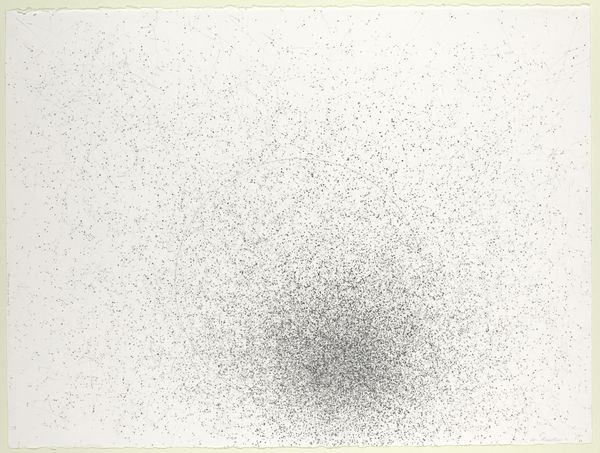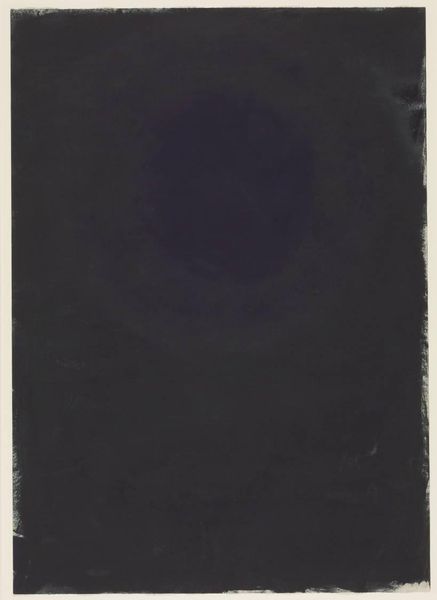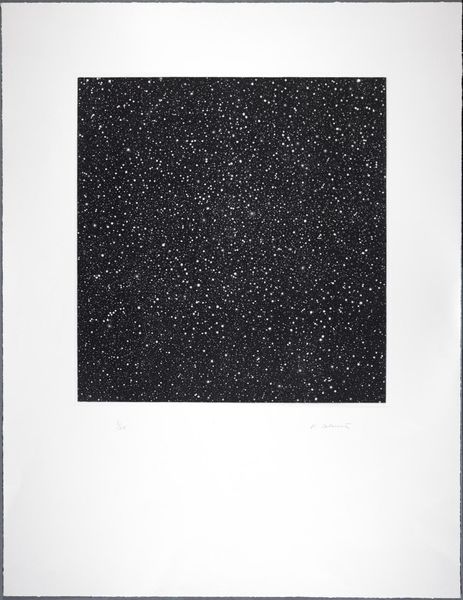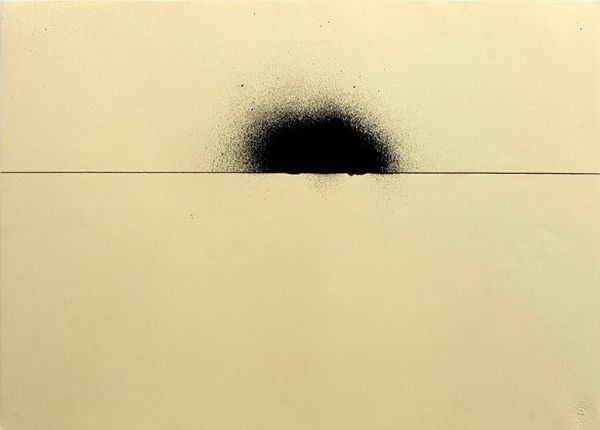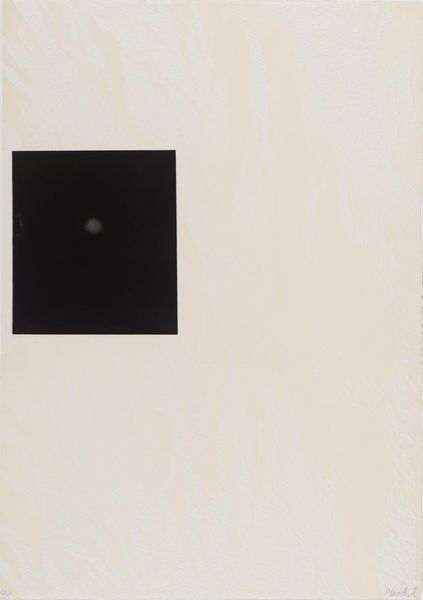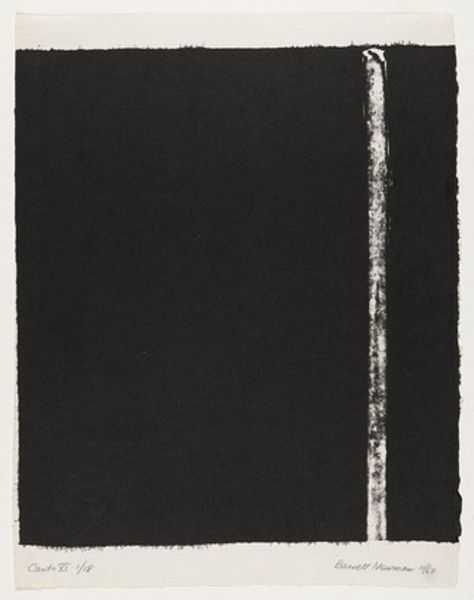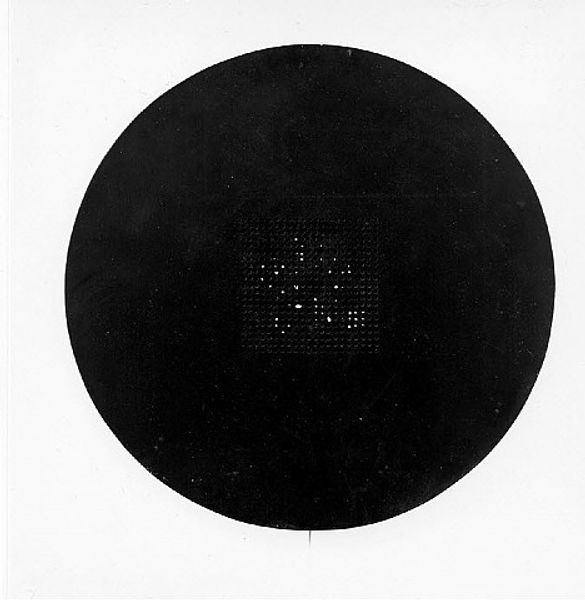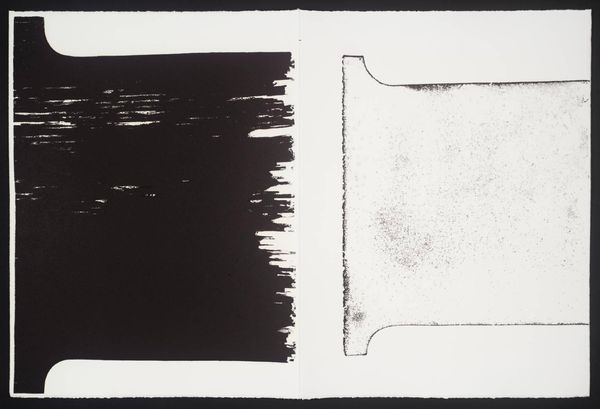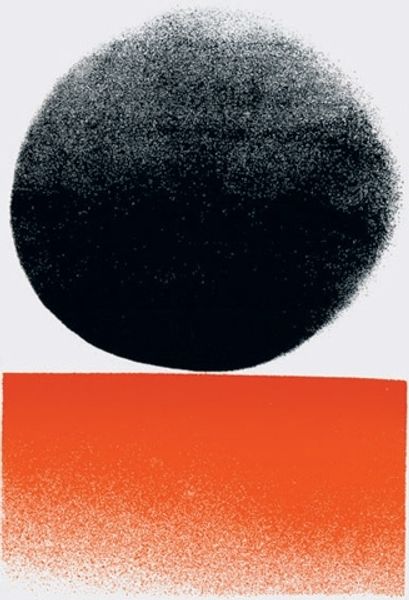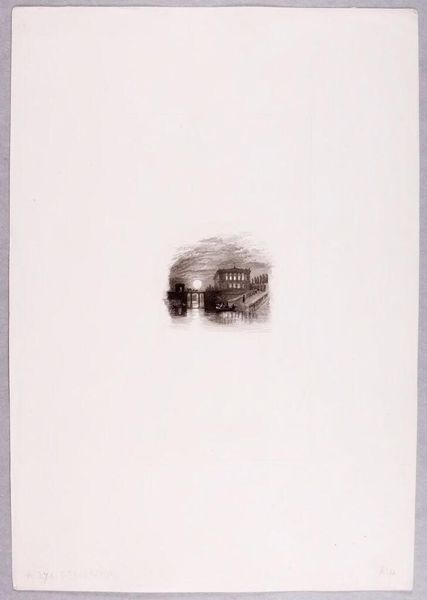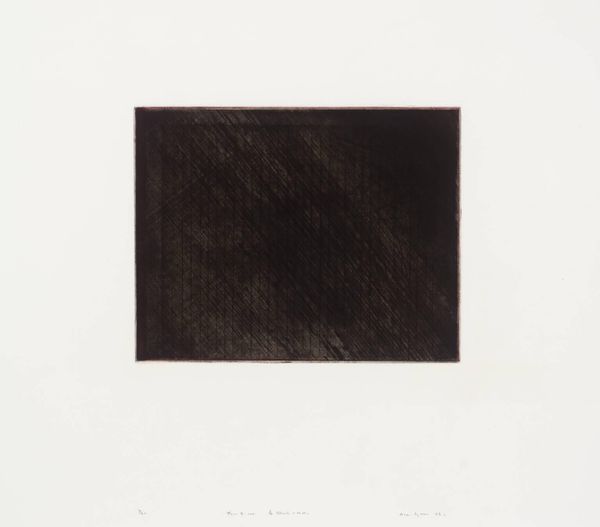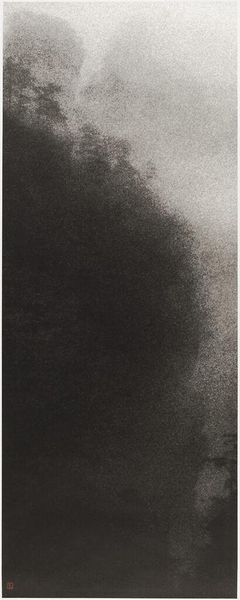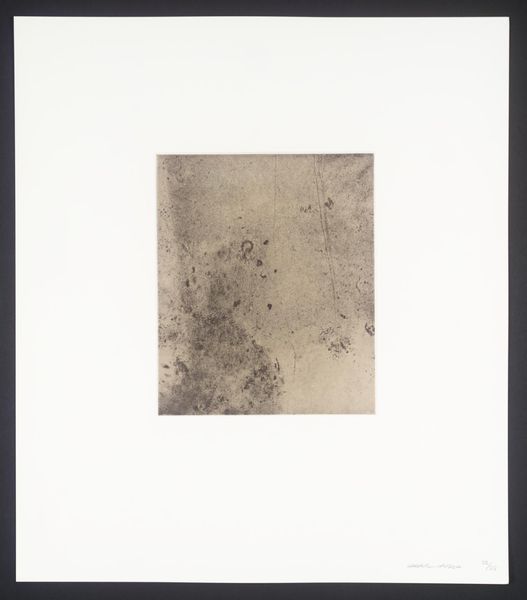
Dimensions: plate: 230 x 180 mm
Copyright: © Fiona Banner | CC-BY-NC-ND 4.0 DEED, Photo: Tate
Curator: Fiona Banner's print, "Swarm," presents a concentrated mass of black ink against a stark white background. It's part of the Tate collection, offering an interesting, somewhat ambiguous visual. Editor: My first thought is of a void, or perhaps a gathering storm cloud. There's a certain tension created by the density of the black against that negative space. Curator: Indeed. Banner often explores the overwhelming nature of information. In this context, I think the swarm evokes themes of collective action, or perhaps even the darker side of group mentality. Editor: Absolutely. I'm struck by how a simple shape can conjure up such complex ideas related to power, control, and the erasure of individuality within a larger entity. Curator: It leaves you contemplating the nature of collective identity. Editor: Precisely. There's a real power in such concentrated simplicity.
Comments
Join the conversation
Join millions of artists and users on Artera today and experience the ultimate creative platform.
tate 8 months ago
⋮
In Fiona Banner's etching, Swarm, an amorphous cloud of impenetrable blackness hovers against a white background. It is like a black hole teeming with insects. The print eloquently conveys the unquantifiable and unbounded nature of the insect realm. Banner's work is one of a portfolio of ten prints collectively entitled Bugs. The portfolio was published by the Byam Shaw School of Art in London. Produced as a fundraiser, the proceeds from the portfolio sales were dedicated to providing bursaries to support Byam Shaw students from overseas, particularly those from Latin America, Eastern Europe, Africa and India. The works in the portfolio use various printmaking processes and share an insect theme which has been interpreted in diverse ways. The theme was set by the school principal, Alister Warman. Originally intended to refer specifically to insects found in London, it was conceived of as a sequel to another print portfolio published by the school in 1994, Nine London Birds. The decorative treatment deployed by a number of the artists involved contrasts with a subject matter commonly regarded as repugnant. Anya Gallaccio's contribution, a silver gelatin print entitled Spider's Leg at 400x, invokes the spirit of scientific enquiry. Reminiscent of how often a child's first encounter with a microscope prompts a search for dead insects to magnify, Gallaccio's print presents an unsettlingly close-up view of a spider's leg. Small hairs metamorphose into an otherworldly, densely forested landscape. Other prints focus on the uneasy relationship between insects and humans. Peter Doig's etching, Kings Cross Mosquito, is an image of night-time menace. Under the cover of darkness, a mosquito perches on a hairy section of exposed skin. The mosquito's belly is a deep blood red, suggesting that it has already gorged on the available flesh. Kathy Prendergast's Mittens and Moth Eggs invokes the discreet, noiseless destruction of a bug infestation. A pair of knitted gloves has been eaten by moths and shows signs of disintegration. Insects are, of course, an agricultural as well as domestic threat and this is alluded to in Yinka Shonibare's arabesque Grain Weevil, which depicts a beetle that damages stored grain by boring into it in order to deposit its eggs. A glossy beetle is silhouetted against a matt orange background which is criss-crossed by curving black lines. The white spots that spread over the surface of the print are suggestive of both contamination and insect eggs. Similarly, Mark Wallinger's King Edward and the Colorado Beetle refers to crop destruction. The Colorado beetle of the title is a small, yellow American beetle whose larva is exceedingly destructive to the potato. Wallinger's potato print uses as its medium the potential victim of the insect. The image of the beetle is repeated five times on the print, with the strongest print at the centre surrounded by increasingly weaker prints. The arrangement of the beetles suggests that these five represent only a tiny section of an endlessly repeating pattern, hinting at the overwhelmingly profuse aspect of the insect world. In Tacita Dean's Wasp, a reviled insect is granted a formal grace. It is photographed on a car windscreen among the raindrops which are beyond the reach of the wipers. The bright lights of the road are blurred by the droplets into brilliant pools of light. Amid this dazzling light, the wasp glows like a small piece of amber. In Cornelia Parker's The Spider that Died in the Tower of London, the creature is magnified to fill the frame of the print. Set against a pale blue background, we are confronted with the remains of a spider which, if attended to at all, would ordinarily be swept up and disposed of without ceremony. This is consistent with Parker's familiar strategy of evoking the hidden stories of overlooked objects, thus transforming their status. Brad Lochore's print, Night Moth, presents the orange glow of a household lamp giving way to darkness on all sides. The shapes conjured by the contrast of light and shadow suggest the outline of fluttering wings. Finally, Gavin Turk's lithograph, Metamorphosis, is accompanied by a short text: 'As he awoke one morning from uneasy dreams he found himself transformed into a gigantic insect.' Quoting Kafka, Turk presents a comically anthropomorphized insect, standing upright on two legs, with arms poised as if about to reach for a pair of pistols in a bizarre insectoid shoot-out. This boxed portfolio of prints exists in an edition of ninety, of which this is number twenty-one. It is presented in a portfolio box with title page and colophon. Further reading:Fiona Banner, exhibition pamphlet, Tate Gallery, London 1998.Fiona Banner and Louise Neri, Banner, London 2001. Helen Delaney January 2002
